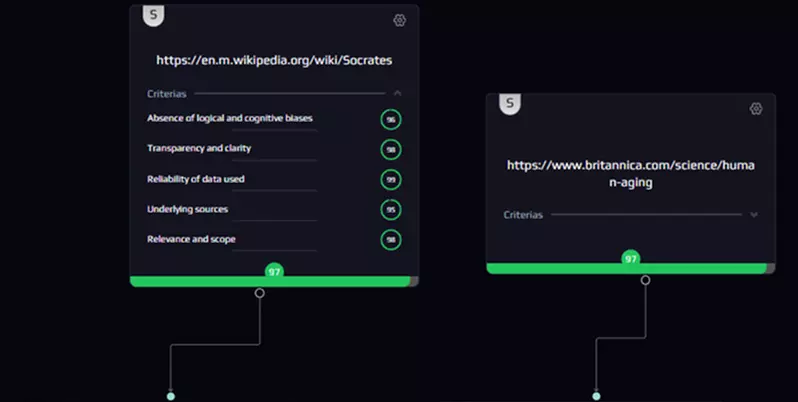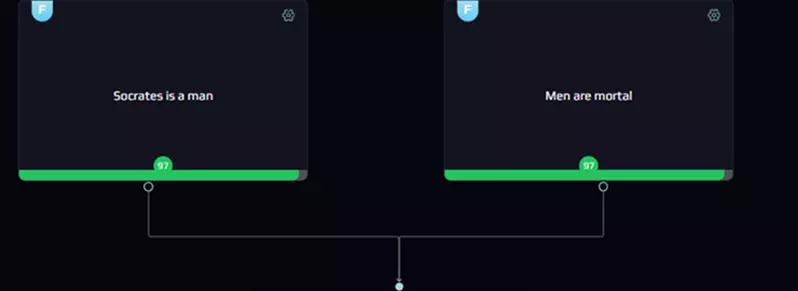Syllogism
Visualize Complex Reasoning Instantly with Syllogistic Logic
Syllogistic reasoning, developed by the Greek philosopher Aristotle, is a powerful tool for logical decision-making. It structures arguments into three key components: two premises and one conclusion. If the premises are true and the reasoning is properly structured, the conclusion follows logically and necessarily.
- Structuring Ideas
- Reliable Conclusions
- Clarity and Simplicity
- Improved Communication
- Faster Decision-Making
- Reduces Cognitive Biases
- Versatile Applications
- Facilitates Consensus



Understanding Brick Types in Mindbloom
Syllogistic logic is visualized through interactive bricks.
In Mindbloom, each card represents a different kind of knowledge or belief — not based on whether it’s a premise or conclusion, but based on how objective or subjective it is, and how it should be evaluated. Here's how each type works:
Present the premises of the argument, laying the foundation for logical conclusions
Reflect personal or strategic stances based on the logical structure.
Represent the conclusion that naturally follows from the facts and the convitction.
Introduce opposing argument that challenge the premises, allowing for a balanced evaluation.
Support Fact or Counter Fact cards with credible data or references.

Fact Cards
These are straightforward, verifiable statements. They're about reality — things that are either true or false, regardless of opinion.
Example:
• Requires evidence, not agreement.
• Evaluated based on reliability of linked Sources.
• Can support or contradict Hypotheses.

Conviction Cards
Convictions express personal or cultural values. They are inherently subjective — not right or wrong, just agreed or disagreed with.
Example:
• Doesn’t need proof — it’s about opinion.
• Can be supported or challenged by other opinions.
• Useful in debates, decision-making, or value-driven arguments.

Hypothesis Cards
Hypotheses live at the intersection of facts and convictions. They combine objective elements (what is known) with subjective interpretation (what might be agreed or disagreed with). They relies on both evidence and beliefs to stand.
Example:
This blends:
• A Fact: Beef has more protein.
• A Conviction: Beef tastes better.
The Hypothesis is neither purely factual nor purely personal — it's a claim that depends on both. You can challenge it with:
• Better facts (e.g., tofu has other health benefits).
• Different convictions (e.g., taste or ethical beliefs).

Counter Argument Cards
Introduce opposing argument that challenge the premises, allowing for a balanced evaluation.

Source Cards
Sources are not claims — they’re where a Fact gets its authority. They ground a Fact in external research, data, or expertise.
Example:
• Evaluated for credibility, not agreement.
• Can strengthen or weaken the reliability of any Fact they support.
• Not used on their own — always connected to a Fact.
Why This Matters
Mindbloom makes these differences explicit and visible. By structuring your reasoning with the right type of brick, you keep your arguments honest and transparent:
You don’t argue over facts the same way you argue over values.
You can see when a belief is unsupported or when a fact lacks credible sourcing.
And you can test whether a hypothesis really holds up — logically and personally.
